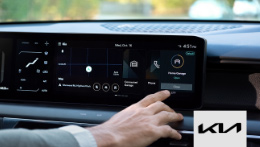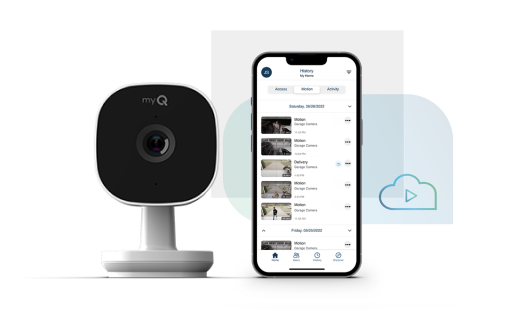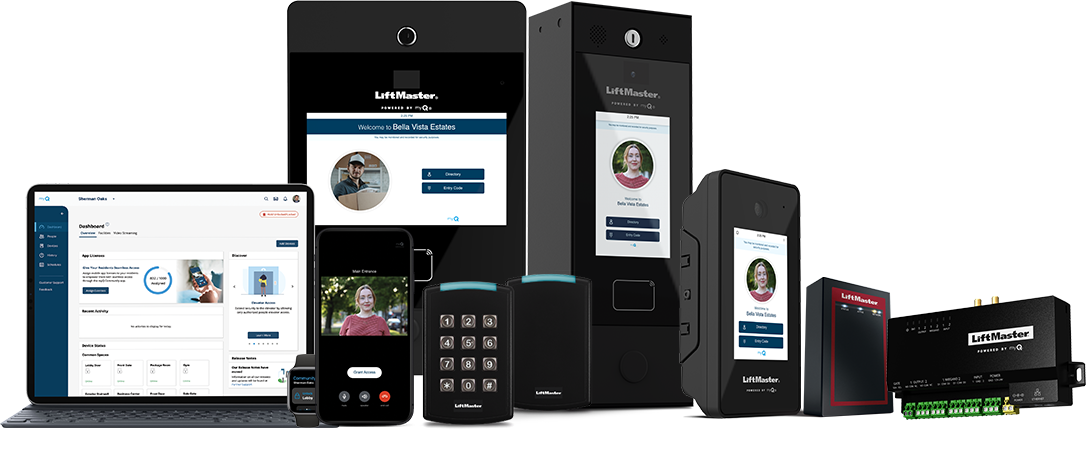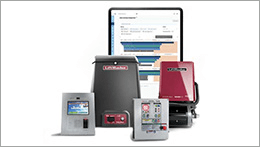Are Keyless Door Locks Safe?
Are Keyless Smart Locks Safe for Your Home?
Smart locks are changing the way we think about home security. With smart locks, you don’t have to dig for keys or worry about whether you locked the front door after rushing out of the house for work.
But a big question remains for many homeowners: Are keyless door locks safe?
It’s a fair concern when you're replacing something familiar, like a physical key, with something digital. How do these systems work? How secure are they in practice? And most importantly, what can you do to maximize your home's protection?
In this guide, we unpack facts, features, and best practices so you can decide whether a keyless entry system is the right fit for your home—and how myQ can take that security one step further.
Are Keyless Locks Safe? An Overview of Smart Security
When protecting your home, safety and simplicity should go hand in hand. That’s why many homeowners are turning to keyless locks. In fact, almost 20% of U.S. households are predicted to adopt smart locks by 2029. But before diving into the details, let’s define what sets them apart from the classic deadbolt.
What Makes a Lock “Smart”?
Smart keyless entry systems replace your traditional lock and key with modern digital access, sometimes referred to as a keyless entry door lock. These locks let you unlock your door without a key. Instead, you might use:
- A code on a keypad
- Smartphone via Bluetooth connection or mobile app
- Voice command through a virtual assistant
- Biometric input (like a fingerprint)
The goal? Streamlined security and seamless access control designed for modern life—think letting house guests or service people in while you're at work. If you're wondering how to lock a keypad door, most models make it easy with one-touch locking or automatic relocking features for added peace of mind. And when it comes to maintenance, learning how to replace the battery on a keypad door lock is just as simple—most models give you low-battery warnings and require only a quick swap to stay powered.
Many keyless systems offer event tracking, which allows you to see exactly when your door is locked or unlocked. Some also allow for temporary codes, so you can give access for a limited time (for instance, if a service person is coming for a one-time fix).
Still, many homeowners want reassurance: Are keyless entry door locks safe enough to replace the deadbolt they’ve relied on for decades?
While any lock can have vulnerabilities, smart locks are often built with multiple layers of protection. With the right setup and use, they can be even more secure than their mechanical counterparts.
Security Features of Keyless Locks
Today’s keyless locks are designed with sophisticated technology that goes beyond physical security.
Built-In Security Benefits of Going Keyless
Modern keyless systems are built for convenience and to protect your physical home and digital data.
Rest assured—with most keyless systems, powerful security features work behind the scenes to optimize safety:
- Encrypted like a vault – End-to-end encryption ensures that the data traveling between your lock and your phone is scrambled in a way that’s unreadable to hackers. Whether you’re unlocking your door from the driveway or from across the country, your commands are protected every step of the way.
- Doubly secure with two-factor authentication – Two-factor authentication (2FA) adds a second layer of defense by requiring not just a password but also a verification code sent to your phone or email. Even if someone manages to guess your password, they’ll still be locked out without that second credential.
- Tamper-proof peace of mind – If someone tries to force or manipulate the lock, tamper alerts can immediately notify you of suspicious activity. Whether it’s a break-in attempt or just an overzealous door slam, you’ll know right away if something’s not right.
- Eyes on your door wherever you are – With remote monitoring, you can check your lock’s status and control access from anywhere using your smartphone. Heading out on a trip? Just pull up the app to make sure everything’s locked down—or let in a neighbor if needed.
These features work together to turn your front door into a smart, responsive security system. And while all of this sounds high-tech, the interface remains user-friendly, even for those who aren’t tech-savvy. That balance—advanced but accessible—is part of what makes keyless security so appealing.
Traditional vs. Smart Locks: What’s More Secure?
Traditional locks have served us well, but they’re not without flaws. When it comes to traditional locks, consider these limitations:
- Physical keys can be lost, copied, or stolen
- Locks can be picked or bumped—a common break-in method
- There’s no way to track who entered your home or when
By contrast, traditional locks have weaknesses that smart locks are designed to solve. For instance, keyless locks can provide:
- Digital access logs
- Custom PIN codes for different users
- Remote locking/unlocking capabilities
- Real-time alerts for every entry attempt
Of course, like any system, a smart lock’s effectiveness depends on how it’s configured and used. But when installed and managed properly, keyless locks can eliminate many of the drawbacks that come with the traditional deadbolt.
How to Maximize Security with Keyless Locks
Having smart tech is only half the equation—how you use it makes all the difference. Even the most advanced smart lock can be compromised if it’s not set up properly.
Whether you already have a keyless system or are thinking of installing one, these strategies can help you get the most from your investment.
Strengthen Your Keyless Security
The good news is you don’t need a cybersecurity degree to keep your system airtight. A few mindful practices can make a big difference in how effectively your lock protects your home:
- Create strong, unique PINs with random number combinations
- Avoid using birthdays or common patterns like “1234”
- Change codes periodically, especially if someone moves out
- Assign individual access codes to family, friends, or service workers
- Use app-based notifications to receive real-time alerts about activity
- Enable auto-lock settings to ensure your door is secured even if you forget to lock it
Update Your Smart Lock
While your keyless lock may seem like a “set it and forget it” device, keeping it current is essential to maintaining its strength. Much like your smartphone or computer, your smart lock relies on regular software and firmware updates to function at its best.
Updates often correct system errors, close off newly discovered security loopholes, and introduce enhancements that improve both performance and protection. Think of it as routine maintenance for your digital front door—small efforts that make a big impact:
- Patch the cracks before they show – Firmware updates seal up security gaps that hackers love to exploit. By regularly updating your lock’s software, you’re reinforcing its digital defenses against the latest threats.
- Unlock new power under the hood – Updates don’t just fix—they enhance. From tighter encryption to smoother app performance, software improvements often bring better speed, reliability, and security.
- Smarter app, safer access – Updating your mobile app ensures you’re using the latest security protocols, settings, and controls. With every update, you gain more protection—and more power in your hands.
In other words, updates are like digital locks… on your digital lock. Make them part of your routine. Thankfully, most brands make the update process simple and automatic, so you’re not stuck manually searching for updates.
How myQ Enhances Keyless Garage Security
While front doors get most of the attention, your garage is just as important. For many homes, it’s the largest entry point and often a direct route inside. Yet, it’s also the one people often forget to lock.
That’s why myQ offers garage-specific solutions that bring keyless convenience and security to this overlooked area of the home.
Built by Chamberlain Group, myQ is a trusted name in smart access technology, offering solutions specifically designed to protect your garage and connect it to your broader smart home system.
What myQ Smart Locks Offer That Others Don’t
myQ technology brings a unique blend of smart features tailored for garage security like:
- Integrated smart garage door openers that connect with your lock system
- Remote control through the myQ app, letting you manage your garage from anywhere
- Scheduled routines that lock your garage at night or while you're away
- Secure guest access features so you can open the garage temporarily
Plus, with real-time alerts, you’ll never wonder if your garage is secure. myQ keeps you informed with:
- Instant notifications for all lock or door activity
- Warnings for forced entry attempts
- Insights from video integration
These alerts let you respond quickly, whether you’re out of town or upstairs watching a movie. And when paired with video integration (like myQ’s Smart Garage Camera), you can even see who’s coming and going.
If you’re already using myQ for your garage door opener, adding a smart lock is a natural next step. You’ll gain a centralized hub for all your home’s most important access points.
myQ: A Smarter Way to Secure What Matters
In a world where convenience and security often feel like competing priorities, keyless smart locks prove you can have both. Smart locks give you control, customization, and peace of mind—whether you’re at home, at work, or halfway across the world.
If you’re ready to upgrade your lock and your entire approach to home security, myQ offers the smart, secure, and user-friendly solution you’ve been looking for. From your front door to your garage, myQ helps ensure your home is always protected.
Take the next step in smarter home protection. Explore keyless lock options from myQ and discover what peace of mind truly feels like.
Sources:
Statista. Smart Locks - United States. https://www.statista.com/outlook/cmo/smart-home/security/smart-locks/united-states
Family Handyman. The Pros and Cons of a Keyless Entry System. https://www.familyhandyman.com/article/the-pros-and-cons-of-keyless-entry-system/
National Crime Prevention Council. Bumping: A Trend in Home Burglary. https://www.ncpc.org/wp-content/uploads/2017/11/Bumping-A-Trend-in-Home-Burglary.pdf
 Smart Cameras
Smart Cameras


 Fire Station
Fire Station
